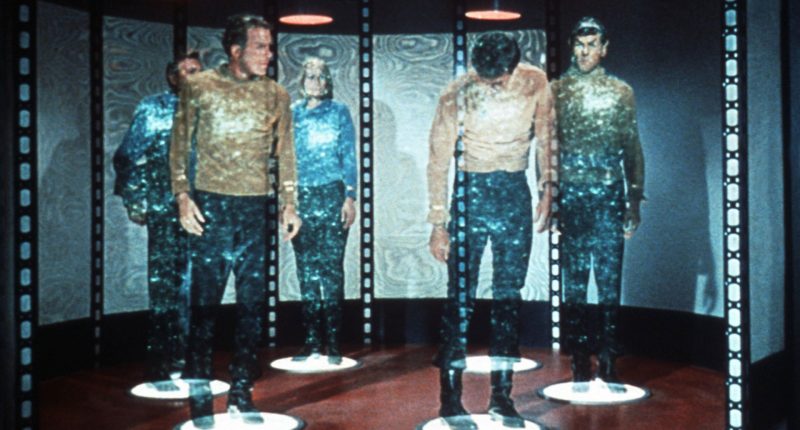SCIENTISTS reckon they have made the first major step towards real life teleportation, taking Star Trek technology out of science fiction and into the physical realm.
New research from an international team of scientists demonstrates for the first time the ability to “teleport” images across a network without physically sending the image itself.
Experts used a cutting-edge technique that transports images using an advanced form of quantum communication, according to researchers from the University of the Witwatersrand in Johannesburg and The Institute of Photonic Sciences (ICFO) in Spain.
Quantum communication uses quantum physics to send information, essentially sending information in 1s and 0s.
But scientists have used quantum optics to expand this “alphabet” so that they can send more complex chunks of information – such as a fingerprint or face.
Rather than physically transmitting images, scientists say this new approach uses a ‘teleportation-inspired configuration’.
READ MORE ON FUTURE TECH
This means the information doesn’t physically travel between communicating parties like it does on a smartphone or TV broadcast.
“Traditionally, two communicating parties physically send the information from one to the other, even in the quantum realm,” lead principal investigator Andrew Forbes, professor at Wits University, said in a statement.
“Now, it is possible to teleport information so that it never physically travels across the connection — a ‘Star Trek’ technology made real.”
A key advancement scientists made was with the use of a nonlinear optical detector.
Most read in Tech
This tool eliminated the need for extra photons and works for any “pattern” – such as a fingerprint or face – to be sent.
“This protocol has all the hallmarks of teleportation except for one essential ingredient: it requires a bright laser beam to make the nonlinear detector efficient, so that the sender could know what is to be sent, but doesn’t need to know,” Forbes explained.
“In this sense, it is not strictly teleportation, but could be in the future if the nonlinear detector could be made more efficient.”
One way this might be used today is in banking.
The technology means a customer can send a fingerprint to a bank without physically transferring the information – making it essentially impossible for hackers to intercept.
Dr. Adam Vallés from ICFO (Barcelona), one of the leads on the project at Wits University, added: “We hope that this experiment showing the feasibility of the process motivates further advances in the nonlinear optics community through pushing the limits towards a full quantum implementation.
“We have to be cautious now, as this configuration could not prevent a cheating sender from keeping better copies of the information to be teleported, which means we could end up with many Mr. Spock clones in the ‘Star Trek’ world if that is what Scotty wanted.”
Find out more about science
Want to know more about the weird and wonderful world of science? From the Moon to the human body, we have you covered…









